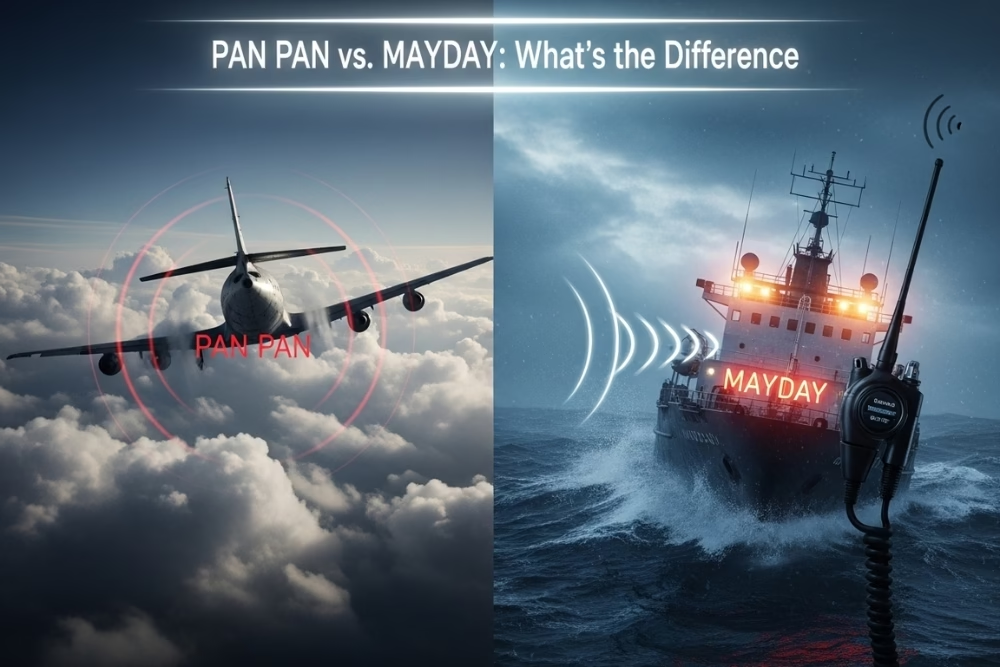An IndiGo flight from Delhi to Goa made an emergency landing in Mumbai on Wednesday night after the pilot declared a “PAN PAN PAN” call due to an engine issue. The Airbus A320neo, operating as flight 6E 6271, landed safely at Mumbai’s Chhatrapati Shivaji Maharaj International Airport at 9:53 PM with all 191 passengers onboard.
What Happened?
The issue occurred around 9:27 PM, approximately 100 nautical miles north of Bhubaneswar. According to reports, the pilot noticed a problem with engine number 1 and made a PAN call to alert air traffic control. Following this, standard emergency procedures were put into action at Mumbai Airport.
“Ambulances and fire tenders were placed on standby and followed the aircraft to the bay,” said an airport official.
IndiGo confirmed the occurrence in a statement:
“A technical snag was detected on flight 6E 6271 while flying from Delhi to Goa on 16 July 2025. As a precaution, the aircraft was diverted to Mumbai, where it landed safely.”
What Does ‘PAN PAN PAN’ Mean?
“PAN PAN PAN” is an international radio signal used to indicate an urgent but not life-threatening situation. It tells air traffic control that something isn’t right and the crew may need help, but there’s no immediate danger to life.
Common reasons for a PAN call include:
- Partial engine trouble
- Low fuel
- Medical emergencies
- Minor mechanical problems
The term “PAN” comes from the French word panne, meaning “breakdown.”
Repeating “Pan Pan” three times ensures the message is clear and taken seriously. It’s commonly used by vessels, planes, and other vehicles to alert nearby stations or crews of non-critical but pressing issues.
Even though it’s not as serious as a Mayday, a PAN call alerts ground teams to prepare just in case emergency support is needed, like rerouting the flight or having emergency vehicles on standby.
What Does ‘Mayday’ Mean?
Mayday! Mayday! Mayday! — It’s the emergency call a pilot or captain ever wants to make. Why? Because it means there’s serious trouble, often life-threatening.
“Mayday” is an international distress signal used over the radio when someone is in danger, especially on planes or ships. It tells others that urgent help is needed right away.
The word is repeated three times—“Mayday! Mayday! Mayday!”—to make sure it’s heard clearly and not confused with similar-sounding words, especially when there’s a lot of noise.
After saying “Mayday” three times, the person in trouble shares important details: what kind of vehicle they’re in, what the problem is, where they are (or were last located), how much fuel they have, how many people are on board, and what kind of help they need. This helps rescuers respond quickly and accurately.
‘PAN PAN PAN’ vs. ‘Mayday’: What’s the Difference?
- PAN PAN: A serious but non-life-threatening situation. Help may be needed, but there’s no immediate danger.
- Mayday: A critical emergency where there is an immediate threat to life or the aircraft.
| Situation | PAN PAN | Mayday |
| One engine fails (others working) | ✅ | |
| Fire onboard | ✅ | |
| Sudden loss of cabin pressure | ✅ | |
| Low fuel (not critical) | ✅ | |
| Passenger medical issue | ✅ | Possibly (if severe) |
When a Mayday is declared, emergency protocols kick in immediately, including giving the plane top landing priority, dispatching rescue teams, and preparing for evacuation if necessary.
Why Did IndiGo Use ‘PAN PAN’ and Not ‘Mayday’?
In the case of flight 6E 6271, the engine issue was serious enough to divert the flight, but not considered an immediate danger to the aircraft or passengers. So, the pilot followed international protocol and used a PAN PAN call instead of Mayday.
Thanks to proper procedures, all 191 passengers were safely deplaned, and the aircraft was thoroughly inspected as per airline and aviation authority guidelines.
PAN PAN and Mayday are both emergency signals, but they’re used for different levels of urgency. IndiGo’s crew made the right call, staying calm, following procedure, and ensuring everyone’s safety.
Sometimes, it’s not about panic—it’s about preparation.



